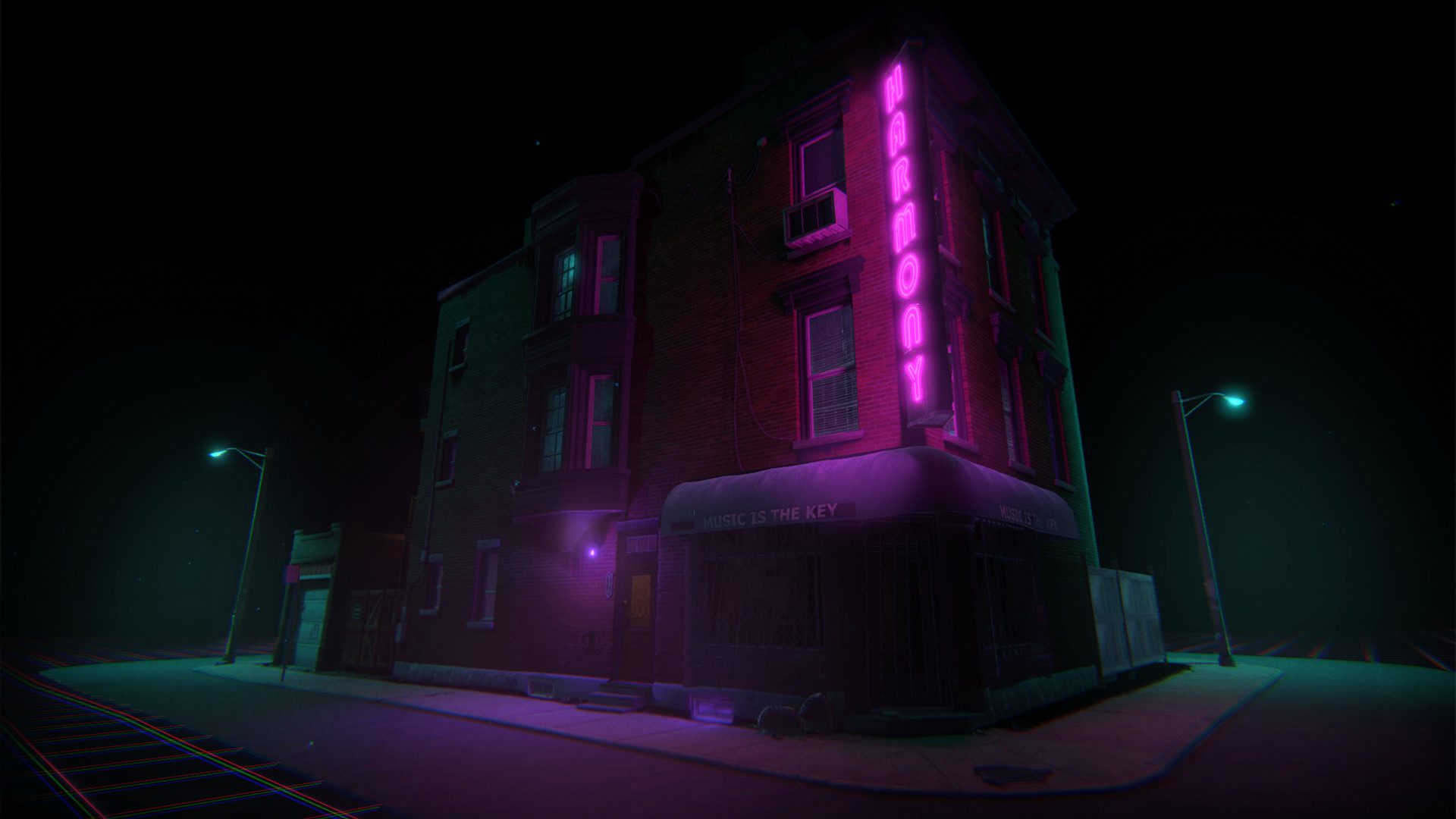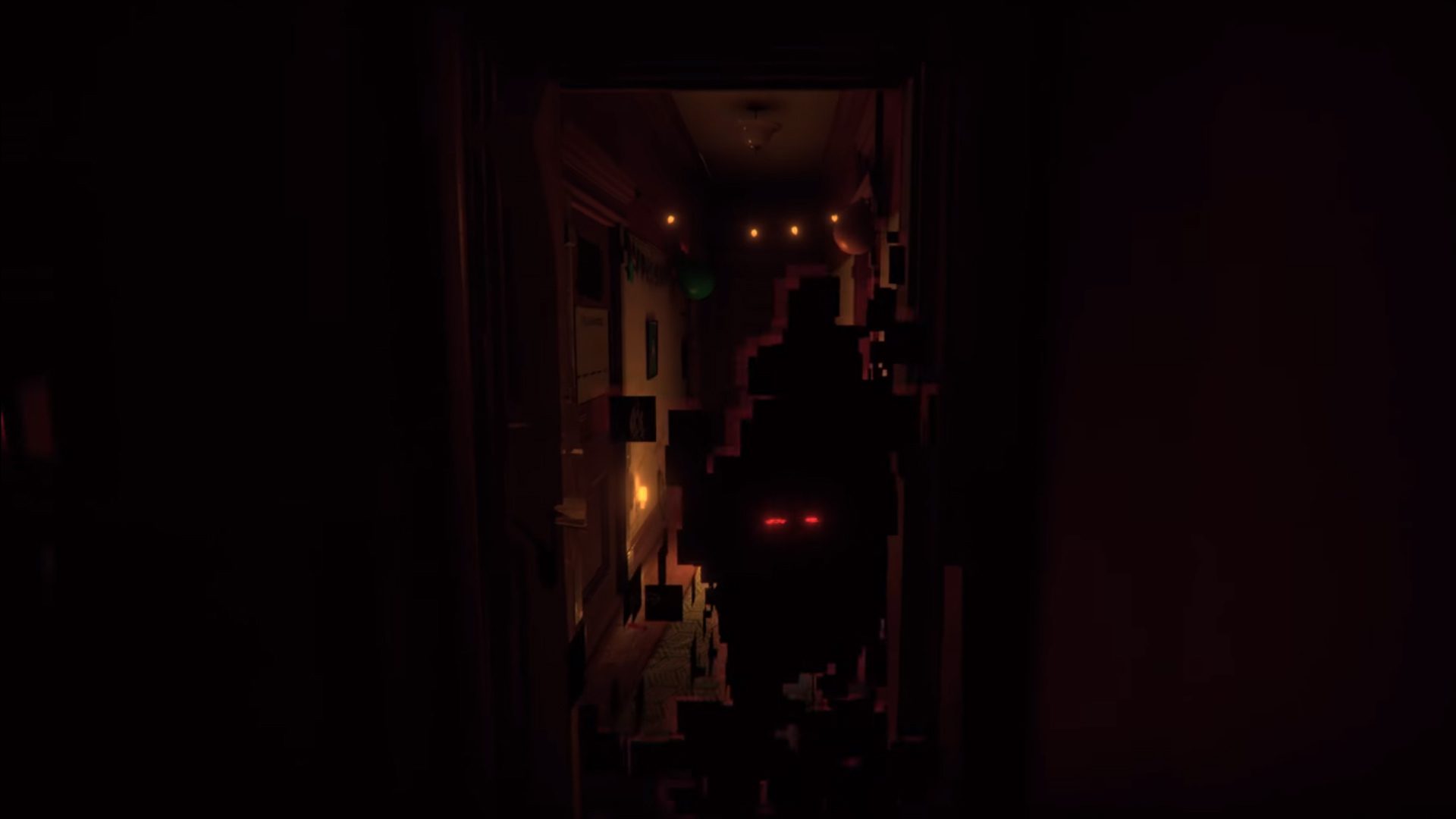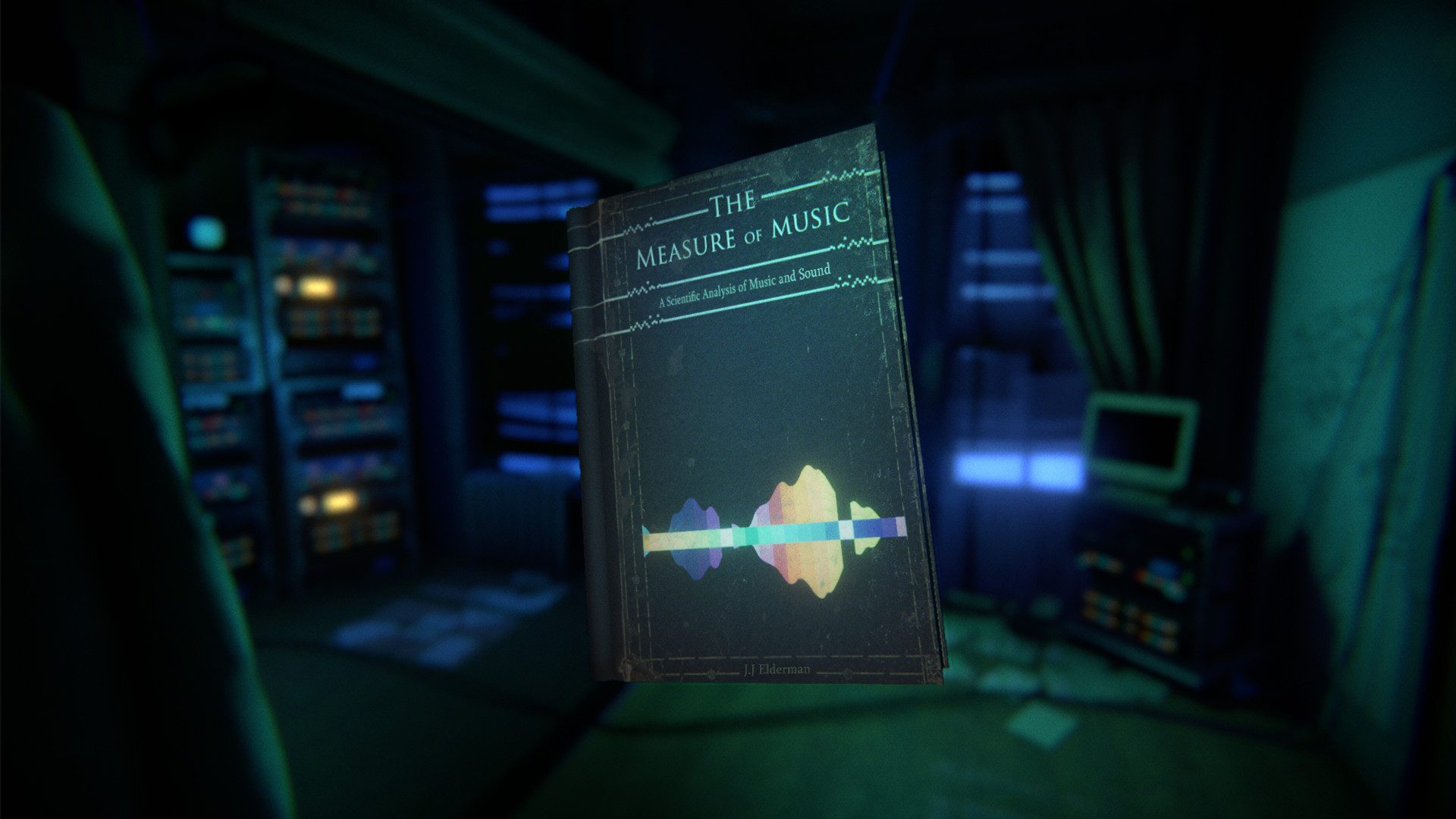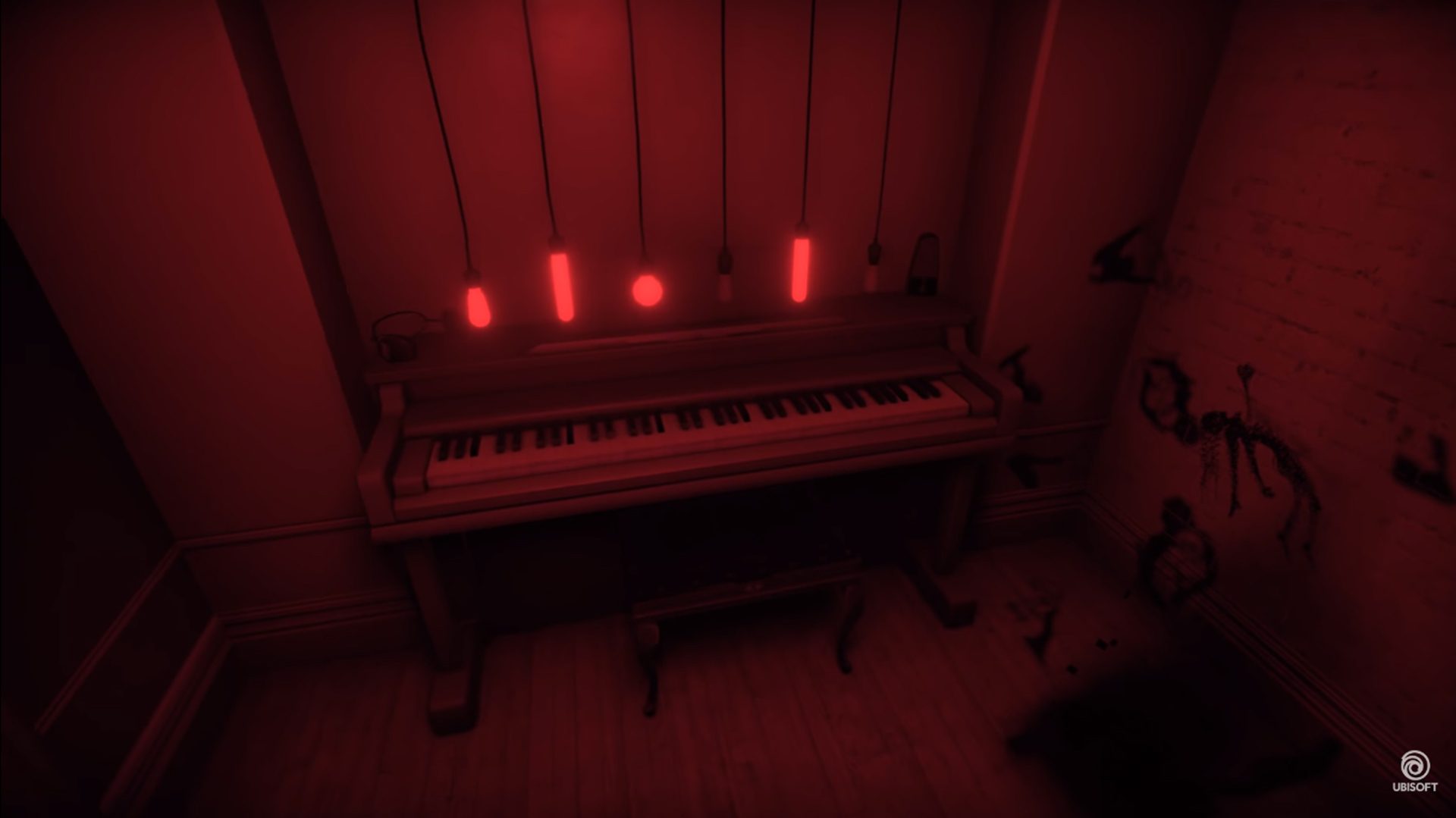Transference (2018) is a single-player psychological thriller that takes place in a shadowy reflection of reality—the simulation of a family’s collective minds who’ve presumably been corrupted after the father, a scientist, tests his breakthrough procedure on himself, his wife, and child. While fairly short in length, the game’s intense themes and film-like quality will leave you reeling well after the credits roll.
Transference Review Details:
Publisher: Ubisoft
Developer: SpectreVision, Ubisoft Montreal
Available On: Steam (Vive, Rift), Oculus Store (Rift), PlayStation Store (PSVR)
Reviewed On: Oculus Rift, HTC Vive
Release Date: September 18th, 2018
Gameplay
In a live action sequence, we learn that scientist Raymond Hayes has invented a way to replicate organic consciousness in a virtual environment. There’s some room for interpretation, but judging from Hayes’ opening speech it appears we were either a test subject, or a colleague that signed on to help him realize his dream of eternal life. Either way, he thanks us for our role in making it possible. An eerie misalignment of the video’s tracking hints that Hayes’ eternal paradise is everything but.

Awakening on the street corner in front of Hayes’ home, it’s clear we’ve been tossed into a degrading virtual reality that needs your help to fix. Missing assets like door knockers and entryways show up as big black voids sporting red error messages.
The broken file is fixed by solving the relevant puzzle, such as playing a few musical notes on the apartment building’s buzzers, or tuning a radio so you can temporarily link two family members together for a panicked chat. It’s not so simple though, as you soon learn that switching off the light lets you traverse one of three inner realities coexisting separately, each of them fractured reflections of the family’s real apartment as seen through the eyes of Hayes, his son Ben, and his wife Katherine.

Puzzles have a good range of difficulty, and there are only few moments when the solution is immediately obvious. There’s little to no help from Hayes’ video logs or his memories, so you’re basically on your own to figure out how to escape the progressively horrifying simulation.
The back drop is nothing short of unsettling, with its rattling doors, and voices calling out for help. The worst bit though is terrifying beast that’s ostensibly corrupted the three digital replicants, popping out at disturbingly inconsistent moments of high tension. And you can’t run or hide either; you walk at an eerily slow pace throughout the game, searching for the next puzzle solution and hoping the beast doesn’t appear again for another one of its truly terrifying jump scares.

That said, jump scares are very few, making the horror aspect more reliant on the narrative and the game’s fractured setting. A glut of video recordings featuring Hayes are scattered throughout the game, and really start to drive home just how disturbed he became in his search for the ultimate solution. Found objects like USB drives, audio recordings, notes, and books act as supporting material, letting Hayes offer the viewer brief peeks into his family life and why he continued on with his work after everyone doubted him.
Although it’s an object-oriented experience, there isn’t any inventory to speak of, requiring you to carry key objects by hand through the digital rifts by turning on and off the light switches in the house. Sometimes it’s not entirely clear which objects are important puzzle pieces though, so a complete exploration of the available dimensions is necessary to really understand what’s missing. This can be frustrating in some puzzles, but thankfully the apartment isn’t so large that you’ll be hunting for too long.

The game is short and sweet at one and a half hours length for my personal playthrough. While I stopped to inspect many of the found objects, I wasn’t overly thorough, so your mileage may vary. In the end, SpectreVision and Ubisoft are trying to walk a fine line between an adventure game and a small budget indie film, so I didn’t really mind the tighter nature of the game’s pacing to fit that specific style. That said, I could have easily dove back in for at least another two to three hours, but I’m willing to admit that a longer format might have ultimately desensitized a user from staying fully engaged with the non-stop thrills and quick pacing.
Immersion
Visuals aren’t everything, but they certainly carry a lot of weight when it comes to forgetting you’re actually in your underwear in a wheely chair wearing a VR headset. To that end, visual fidelity in Transference is clearly at, or very near to ‘AAA’ territory.

Excellent lighting, high-quality assets and textures, and extremely well-realized audio cues help create one of the best-looking and sounding adventure games to date. And while it’s clearly corrupted simulation, all of this brings you into the moment, irregardless of the fact that you can’t actually die or get hurt.
Characters feel real too, which is in no small part due to excellent character animations for brief but startling interludes, and competent voice overs that rattle your brainpan throughout.

Object interaction is fairly standard, and the world’s many objects seem solid enough in how they interact with the world. Your hands are represented in a ghostly neon blue hue, giving you just enough of a visual cue to use them accurately, but not so overt that it clashes with the wacked out simulation that is the world of Transference.
Comfort
Transference presents a few comfort options so all experience levels can play without too much worry. The game includes optional ‘blinder’ vignettes that can be toggled to reduce your field of view during both forward movement and turning—something heavily used in Ubisoft’s Eagle Flight (2016). Users can fiddle with the blinder’s strength to get the feel that’s right for them.
There’s also smooth turning and a variable angle snap-turn available, the latter of which is suitable for new users, or those with temperamental stomachs.
Thankfully the game seems to recognize if the user is seated, and automatically adjusts your height in-game so there’s no odd stretching in order to interact with found objects or puzzles. There is a crouch toggle so you can easily access lower cabinets, although from an immersion standpoint this is less advantageous than a ‘force grab’ ability.







